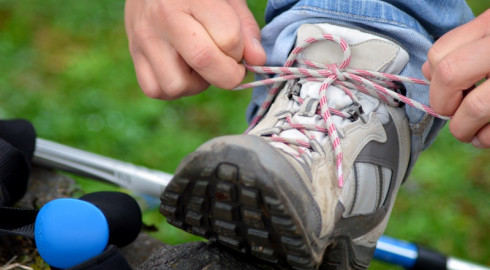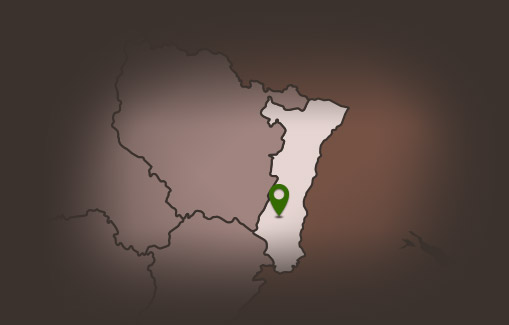Hiking equipment and clothing: everything you need

Backpack: This is the hiker’s travelling companion! It will accompany you throughout your hike. The backpack allows the hiker to carry his equipment to his next place of shelter with maximum comfort. The size of the backpack is measured in litres and varies according to the length of the hike. For a day hike, use a backpack of 20 to 40 litres. For a hike like the Tour du Grand Ballon, you will need a backpack of 40 to 80 litres (depending on the distance of the hike and if you need to carry your own food, sleeping bag, etc.) Your backpack should have external pockets so you can slip in accessories you’ll often need when hiking (water bottle, map, camera, sunglasses, etc.). The straps of the backpack should be adjustable to the shoulders of the hiker, and if possible have straps that attach around the torso so that the weight is not supported solely on the shoulders. The backpack can also contain an integrated rain cover to protect from the rain.
Hiking shoes/boots: They are the indispensable part of the hiker’s equipment. It is unadvisable to go hiking with poor footwear, which may cause injuries (sprains, etc.) and be painful for your feet, ankles, knees and even the lower back if the soles of the shoes are too flat and have a straining effect on your spine with each stride. Poor footwear can also be dangerous! Indeed, shoes with a smooth sole cannot grip all types of terrain and can cause you to lose balance on slippery surfaces for example. You must wear real hiking shoes, which offer many advantages:
The sole must have a good quality grip and a suitable rigidity to deal with any type of terrain (wet slippery terrain, grass, etc.). They must be thick enough to cushion every step and have studded grips to prevent falls, slips and loss of balance on slopes. The shoe should be as high as the bottom of the calf, giving good support to the foot and ankle, which will decrease the chance of injury when losing your balance.
Locking-lace hooks should also properly support your ankle. Be careful though not to overtighten the laces, which could hamper your blood circulation and induce pain in the foot. In terms of size, the shoes may need to be slightly larger (a 1/2 size more than your normal shoes) to enable you to wear thick socks without compressing the foot, which needs to breathe. When walking, your heel should not lift off the sole, if this is the case, then the shoe is too big. You can also use additional insoles for comfort and support.
Make sure your shoes are properly waterproof. The mountain weather is pretty unpredictable, waterproof footwear will help keep your feet dry during a shower. The shoe should nonetheless provide good breathability, i.e. it must allow the foot to breathe and to evacuate its own moisture.
Hiking shoes are somehow ‘all-terrain shoes’ and must be solid. They must therefore have a toe-cap, i.e. a rigid part at the front of the shoe that protects the toe against potential shocks.
Gaiters: When hiking, both in summer and winter, gaiters can prove to be very useful for the hiker. Indeed, made of sealed and waterproof fabric, gaiters cover the entire lower leg, the upper part of the shoe to below the knee. They are attached to the shoe with tie-ups and hooks and are maintained by an elastic lace and poppers. Gaiters can indeed be very useful.
They prevent water from seeping into your shoes, either because it’s raining, you’ve walked into a puddle, or in the snow if snowshoeing, or on wet grass. Gaiters prevent you from getting your trousers wet and damaging them or hurting your legs if you are wearing shorts. In this case, gaiters can also protect you from injuries or scratches caused by rocks, branches, bushes or other creeping vegetation.
Hiking poles: Like skiing, snowshoeing or Nordic walking, hikers also need hiking poles! In the same way as these other sports, hiking poles allow the hiker to regulate the pace of his walking and breathing. They improve the balance and stability of the hiker, decreasing the risk of falls on unstable, slippery, and difficult terrain. Four points of support are much more effective than two, so hiking poles ensure better movement control and increase confidence on descents for example. Hiking poles are also very useful when it comes to obstacle clearance, either rocks or tree trunks to climb, or rivers or muddy passages to cross, especially as they can be used to test the stability of the terrain before you step on it. In addition to improving your balance, hiking poles reduce the impact and weight on your joints, thus limiting the risk of injury in the short and long term. They reduce muscle fatigue in your legs, using the upper body to balance the effort, while reducing swelling of the hands and fingers as gripping the hiking poles improves blood circulation. Most hiking poles are telescopic, making them easy to transport, since, once collapsed, they only take up very little space. The length of the hiking poles should be adapted to the height of the user. To choose the size that suits you, select a pole with which, when you have the handles in hand and that the tip is on the ground, your elbows to form a right angle. Their height can be adjusted easily with a screw or clip system. This is all the more important as you can adjust the pole according to the type of terrain on which you will be hiking: The poles should be shorter when ascending and longer when descending. You can also use only one hiking pole on an easy and short hike, with a small backpack, it’s lighter and easier to use. But if you plan a more ambitious hike on difficult routes and trails with a heavier backpack, the use of two poles is strongly advised to ensure better balance and less fatigue.



